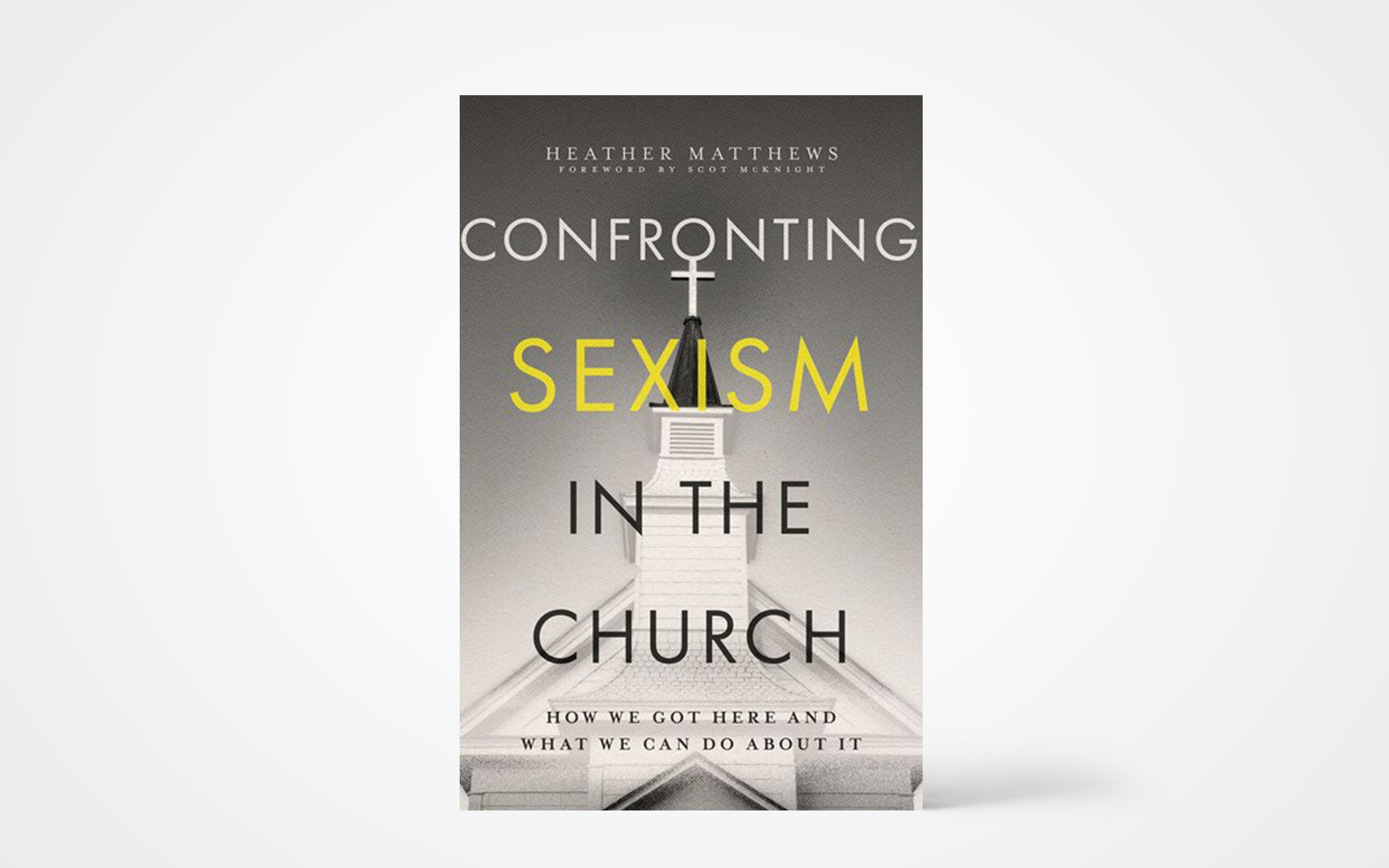“What are you doing here?” My male colleague stared.
I stopped near the conference table. What was I doing here? I had been appointed to the prestigious committee. But why was I picked? Only two years on the job—and a young woman?
It’s “unbecoming”—maybe “shameful”—to share this story, I think. I feel squeamish—as if I really did something wrong—even now that I’m past middle aged. Although I’ve changed, I find myself still shaped by those cultural norms. So be assured: Sexist cultural norms continue to splash acid onto many a heart.
Which makes Heather Matthews’s work on sexism very needed. Still.
How large of an issue is it? Large.
Matthews says, “(W)e have all been born into a patriarchal system, we all have absorbed sexist beliefs from the culture around us. We are all sexists.”
Matthews, a doctor of ministry program manager at Wheaton College Graduate School, calls the evangelical church out of gender blindness or gender unconsciousness. She defines terms that range from overt or covert sexism to hostile sexism. “(T)here are systems and beliefs that must be exposed, examined, and questioned in order to understand the full scope of sexism that still exists especially in Christian contexts.”
Theologian Scot McKnight concurs. In the foreword, he writes, “(S)exism needs to be noted, named, and nixed.”
Okay, how?
Matthews explains how by creating a foundation. She contrasts historical church overviews of sexism and antisexism and then whisks readers into the now with chapters like “Confronting Sexism in Christian Leadership.”
Of special interest to me was her chapters on “antisexism,” a 1970 term. In “Theology of Antisexism” and “A Brief History of Antisexism in the Church,” Matthews teaches about historical figures like Christine de Pizan and Katherine Zell.
“Most who want to restrict women today know very little of the history of women and women’s roles in the church,” writes Matthews. “Many see in Scripture that women were involved at every level of church leadership in the first centuries of the church and that women were able to use their gifts freely on the basis of their empowerment by the Spirit.”
Matthews also describes the outgrowth of Protestant reformation and evangelicalism as seen in groups like the Council for Biblical Manhood and Womanhood and Christians for Biblical Equality. I especially appreciated learning how complementarism—seeing males and females as a team with pre-scripted roles—might function as an opaque cloak over the superior/inferior conversation. Influencers like James Dobson saw “evangelical feminism and egalitarianism as a version of theological liberalism and as an example of biblical relativism.” Perhaps what some leaders have missed was how biblical interpretation could be driven by one’s self-interest.
Matthews shows nuance when she says, “The views of women held by the early church fathers are complex and should not be seen as wholly misogynistic since women held some positions of leadership.”
Confronting Sexism in the Church offers people who care about the church another window on a topic that will always matter. (InterVarsity).
About the Author
Cynthia Beach authored the 2024 novel, The Surface of Water, and the writing book, Creative Juices for Writers. She co-directs Scriptoria Workshop with Newbery-winner Gary Schmidt. In 2025-6, she will serve as Artist in Residence in Dundee, Scotland.

